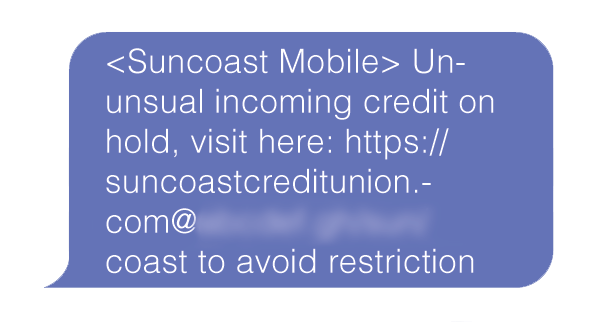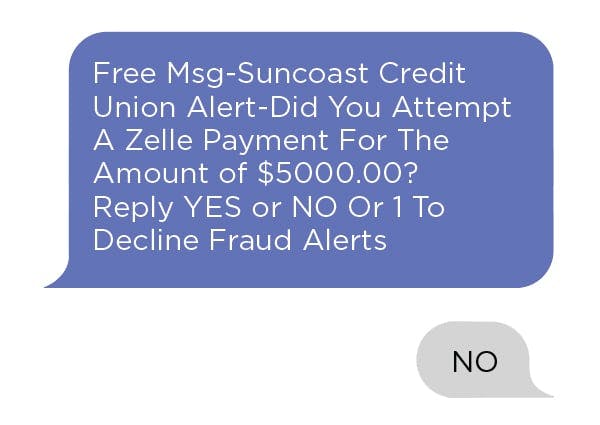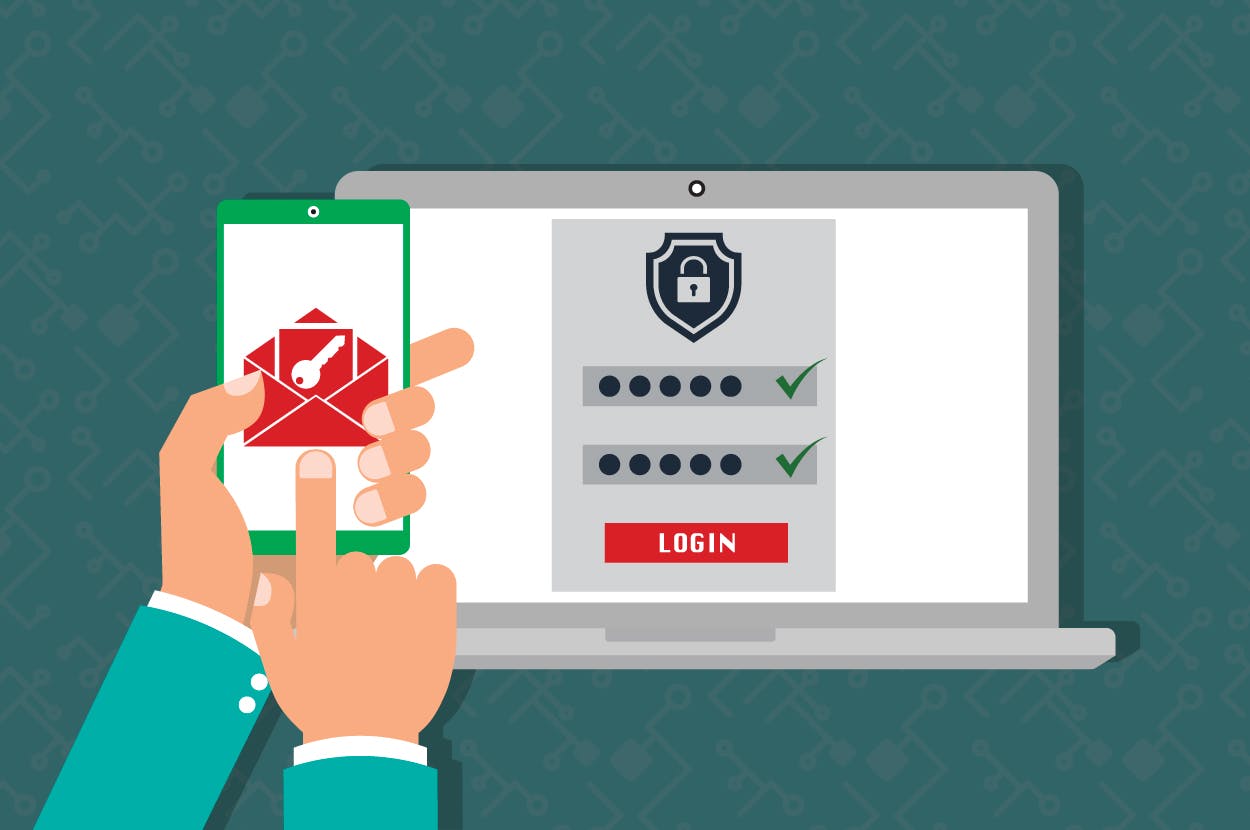Safety and Protection
Text and Phone Bank Fraud Scam
December 03, 2021

Criminals actively conduct fraud campaigns, using text, email, telephone or a combination of those to steal your identity and money.
This is a reminder that Suncoast will never ask for your complete account number, PIN, CVV code, or full social security number in a text or email. If you receive a message asking for that kind of information, do not engage!
Report fraudulent text messages or emails by sending a screenshot and the phone number of the sender to abuse@suncoastcreditunion.com
If you’re a Suncoast member who mistakenly provided any personal information or who has been impacted by a scam, please contact Suncoast immediately to report the fraud and update all necessary credentials.


Scammers know that people are likely to respond if they think something is going on with their bank account. Once they get a “NO” response back, they follow up with an immediate phone call.
The call looks like it is coming from your financial institution. This is a key part of the scam, because they want to trick you into answering the call and trusting that they are from your bank or credit union.
The scammer will claim to be from the financial institution’s fraud department. They trick you into providing your bank information by saying they need to confirm your identity before they can secure your account.
Texts Also May Contain Malicious Links
Another example of a common text scam is when a text contains a link that seems to be from a financial institution. When you click on the link, it has you put in your account number, giving the scammer access to your account.
Remember even if a text claims to be from your financial institution, you should still proceed with caution. This means not clicking, not sharing personal info, and not responding.
How to Protect Yourself
To protect yourself from scammers, you should always have your scam radar on. If any text, call or email seems suspicious, do not engage. If it is a text or an email, do not click the links. If it is a phone call, hang up.
When a scammer is impersonating your bank, credit union or another legitimate business, your best bet is to end the call and reach out to the company directly using their verified contact information
Go to the company’s website, find their legitimate contact information and then reach out to confirm any activity. Remember, it’s always better to be safe than to risk losing your hard-earned money!

Category
Safety and Protection
Tags
Find a Branch or ATM
We’re local, serving multiple counties in Florida


